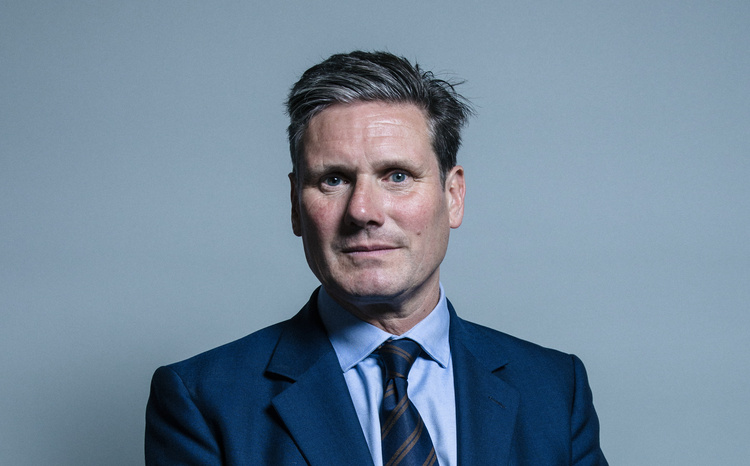Digital health profile: Tim Kelsey
- 17 September 2015

Dermot O’Riordan, the chief clinical information officer at NHS West Suffolk, perhaps gave the best instant assessment of the departure of Tim Kelsey from his post as director of patients and information at NHS England.
“Tim is a bit of a marmite character,” he tweeted. “But he was definitely a dynamo, for example to involve patients in their care.”
Another NHS IT leader told Digital Health News his departure, to become commercial director of Telstra Health in Australia, was “a shame” because while he “was a bit crazy” he had “got things done” and shaken up the scene.
Shaking things up
As NHS England's director of patients and information, Kelsey has been known for giving eye-catching interviews and speeches containing ideas that have often seemed outrageous, but that have gone on to become important plans in the NHS’ transparency and digital patient agendas.
Continuing the choice theme that first brought him to ministers’ attention, he was instrumental in re-launching the NHS Choices website in 2013 with more information for patients, particularly about the performance of hospitals and individual medical teams.
He has also been closely associated with the coalition government’s plans to give patients access to their medical records.
Although these were steadily watered down over the course of the last Parliament – from giving patients access to their entire medical record, to their GP record, to a subset of that record by March this year – the last target was finally hit.
The new GP contract requires practices to offer a range of additional ‘transactional’ services, such as booking appointments and repeat prescriptions. And further access to records is on the way, with access to the full GP record now due by next spring, and patients now being promised “read and write” access to records by 2018.
At this year’s NHS Expo, Kelsey argued that access was essential. “Harm is reduced through safe digital record keeping and we want everybody to have access to better apps and digital tools to help them make more informed decisions about their health and care.”
In the official announcement of Kelsey’s departure, NHS England flagged the patient access agenda as one of Kelsey’s key legacies.
Hits and misses…
Less successful initiatives have included an attempt to bring the 311 ‘report a problem’ service to the UK from the US, and Code4Health, which Kelsey said would get “100,000 clinicians coding” but which is now being rolled out as a more limited education and support initiative.
Kelsey’s time at NHS England has also been dogged by the care.data controversy. Care.data was an ambitious plan to expand the Hospital Episode Statistics, link them to other data sets, starting with GP data, and then make them available to researchers and others.
Initially, it looked as if the biggest challenge would be to expand HES, since few hospitals are capable of collecting or reporting the data demanded. But once GPs realised the scale of the information that they would be asked to submit, a medical backlash got underway.
NHS England attempted to launch a public information campaign in response, but saw this fall apart when a high-profile leaflet failed to mention the project by name, failed to include an opt-out form, and was delivered by the Royal Mail’s ‘junk mail’ delivery service.
Testing of new information materials was meant to start this month at four pilot sites, but the scheme has been put on hold yet again; this time to allow national data guardian Dame Fiona Caldicott to review the opt-in, opt-out process.
Yet in March 2014, Kelsey had argued that care.data was fundamentally important for the NHS, saying: “care.data is the beginnings of something that, without, we won’t have a health service for much longer.
This morning, the privacy group MedConfidential said: “Tim has gone back to his old job in the private sector, but serious questions of consent and transparency at NHS England remain unresolved. We look forward to seeing how public confidence in the handling of NHS patient data will recover under new leadership.”
And some of the reaction to Kelsey’s departure on Twitter was immediately overshadowed by the care.data debacle. Julian Patterson tweeted: “So farewell, then, @tkelsey1. You didn’t stay long enough to get my data. I always felt I had your number, though.”
Leading the digital agenda
More recently, Kelsey has chaired the National Information Board, which was set up to co-ordinate the activities of the various bodies given responsibility for NHS IT by the Lansley reforms of the NHS.
The NIB issued the latest ‘framework’ for NHS IT, ‘Personalised Health and Care 2020’ last year, to support NHS England chief executive Simon Stevens’ ‘Five Year Forward View’ plan to close a £30 billion gap between funding and demand by 2020-21, and health secretary Jeremy Hunt’s ‘paperless ambitions.’
In the run up to this month’s NHS Expo, Kelsey issued a statement through NHS England, and gave interviews to several newspapers, arguing that “urgent action” to follow through on digital working was “a moral imperative.”
“The online revolution that has transformed so much of the rest of our lives does not support us nearly well enough as patients, citizens or care-givers,” he said. “Hospitals and other providers lag behind general practice in record keeping and patient-facing online services.
“Urgent action is a moral imperative. Patients are at risk where paper is the currency of clinical practice. Digital is also a pre-requisite of cost-effectiveness. The NHS needs to take advantage of the opportunities new technologies offer.”
Despite this, Kelsey’s departure is not entirely a surprise. While many commenters have paid tribute to his vision, passion and drive, he is not known as an implementer. In addition, the ability to rejoin Dr Foster, and to work on an international stage, must have had its attractions.
From journalist to hospital guide
Kelsey’s ability to attract attention and turn a phase perhaps comes from his background as a journalist. It was while he was working at the Sunday Times that he co-founded Dr Foster with Roger Taylor, then a Financial Times journalist, and Roger Killen, a Stanford graduate.
The organisation was formed to generate comparative information on NHS services, and published its first Good Hospital Guide in the Sunday Times in 2001.
The guide had a huge impact, in part because the New Labour government was promoting its NHS Plan to inject more money into the health service, in exchange for ‘reform’ that would deliver more choice to patients.
Alan Milburn, the secretary of state for health at the time that the guide came out, told the BBC that until then the NHS had “acted like a secret society” but would now be forced to “treat people like consumers.”
But hospitals have always complained that the results can be distorted by data effects. And the methodology behind the guide, developed by Professor Sir Brian Jarman, the director of the Dr Foster Unit at Imperial College, London, has generated heated debate, with rival firms and statistical experts questioning the value of his hospital standardised mortality ratio in spotting poor care.
The Department of Health acquired a 50% stake in Dr Foster in 2006, in a move that was supposed to help the NHS to improve its collection and presentation of data, but which was criticised by the Commons’ public accounts committee for the cost – £12 million – and the way it was conducted.
The DH indicated that it wanted to sell its stake in 2010, but apparently struggled to find a buyer until March this year, when the company was acquired by Telstra Health, an Australian outfit that had acquired reseller rights to Dr Foster products and services in 2013.
At the time, Shane Solomon, Telstra Health’s managing director, said this would give it the “experience and skills to compete on a global stage.”
Kelsey himself left Dr Foster to join the consultancy McKinsey. From there, he was seconded to become the government’s first ‘transparency tsar’, from where he joined the NHS as director of patients and information in May 2012.
Simon Stevens, the chief executive of NHS England, said in the official statement of Kelsey’s departure, perhaps summed this up by saying: “Over the past three years, Tim has brought his infectious energy and creative expertise to the vital drive for open, transparent and technology-enabled health services.
“So as the NHS moves into the implementation phase of the strategy Tim has helped craft, we wish him every success as he shifts gear to working in Australia and internationally.”
Kelsey himself responded to Twitter news of his departure by saying: “Thank you to all the outstanding people I’ve had the privilege to work with.” The question now is who will taking on his role at NHS England – and filling his shoes at his band, Betting on Trains.





